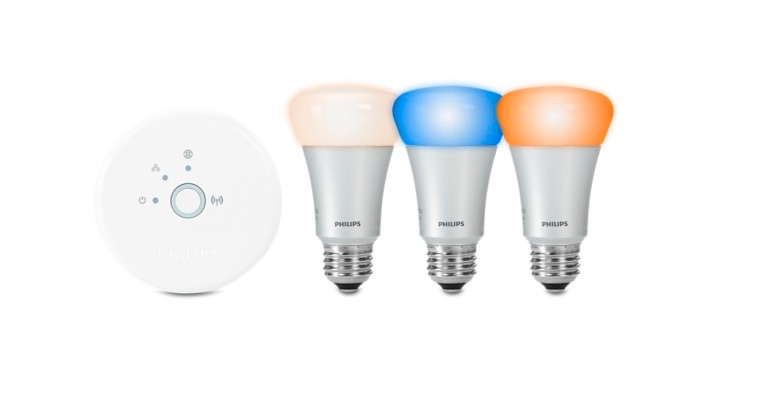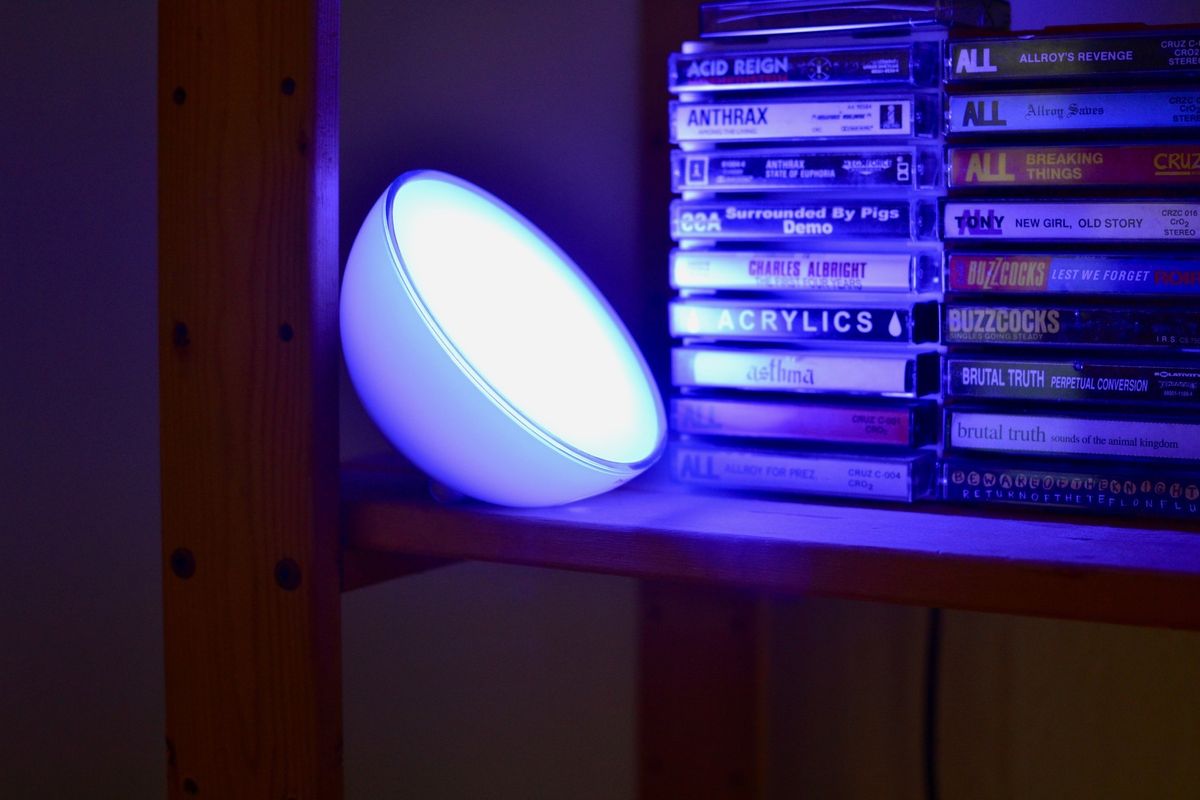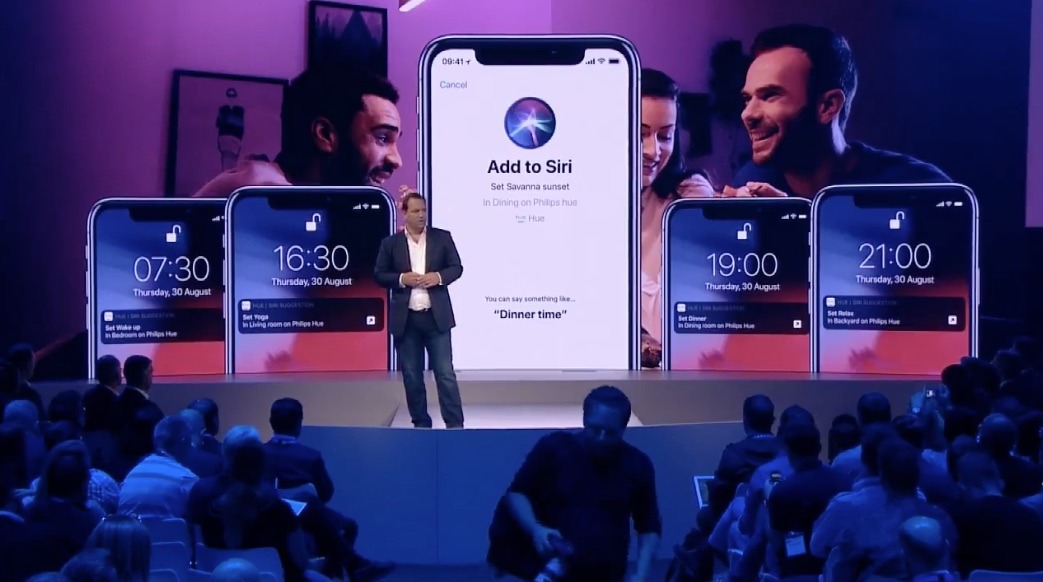philips hue siri sets the stage for this enthralling narrative, offering readers a glimpse into a story that is rich in detail and brimming with originality from the outset. The integration of Philips Hue smart lighting with Siri creates a seamless control experience, allowing users to manage their home lighting with just their voice. With easy setup and a range of functionalities, this combination not only adds convenience but also elevates the ambiance of any space.
The fusion of innovative technology and user-friendly design makes controlling your lighting easier than ever. From setting the mood for a cozy evening to ensuring your home is well-lit when needed, Philips Hue paired with Siri offers an impressive suite of capabilities that anybody can enjoy.
Overview of Philips Hue and Siri Integration

Philips Hue has revolutionized the way we perceive home lighting by introducing smart technology that enhances both convenience and ambiance. Integrating Philips Hue with Siri further amplifies this experience by allowing users to control their lighting with voice commands, making it easier to adjust settings without manual intervention. This synergy between cutting-edge lighting technology and intuitive voice assistance offers a seamless approach to managing your home environment.
Philips Hue lights are known for their versatility and extensive range of features. Users can choose from millions of colors and shades of white light, enabling them to create the perfect atmosphere for any occasion or mood. Additionally, Philips Hue lights can be programmed with schedules, allowing them to automatically turn on or off at designated times, enhancing both security and energy efficiency. The integration with Siri transforms the smart lighting experience, as users can effortlessly command their lights through simple voice prompts. This integration is particularly beneficial for multitasking scenarios where hands-free operation is preferred.
Core Functionalities of Philips Hue Lights
The core functionalities of Philips Hue lights encompass a wide array of features that cater to different user needs. These features include:
- Color Customization: Users can select from over 16 million colors and various shades of white, allowing for personalized lighting tailored to specific moods or activities.
- Scene Management: Philips Hue provides preset scenes that can transform any room’s lighting with a single command, ideal for movie nights or dinner parties.
- Scheduling and Automation: Users can set schedules for lights to turn on or off, simulating occupancy when away or enhancing morning routines with gradual wake-up lighting.
- Integration with Smart Home Systems: Philips Hue is compatible with various smart home platforms, enabling users to create complex automation with other devices, such as thermostats and security systems.
- Remote Access: With the Philips Hue app, users can control their lights from anywhere, providing peace of mind when away from home.
Advantages of Using Siri to Control Smart Lighting, Philips hue siri
Using Siri to control Philips Hue lighting offers numerous advantages, enhancing the overall user experience. Notably, voice control simplifies the interaction with smart lighting systems, making it accessible to all household members, including children and elderly individuals. The following points highlight the benefits of integrating Siri:
- Hands-Free Operation: Users can adjust lighting without needing to reach for a device, making it especially convenient when cooking, entertaining, or relaxing.
- Quick Adjustments: Voice commands allow for immediate changes to lighting conditions, such as dimming lights for movie night or brightening them for reading.
- Customized Commands: Siri can be programmed with personalized phrases, making it easier to remember how to adjust the lighting as desired.
- Accessibility Features: Voice control accommodates individuals with mobility challenges, ensuring that everyone can enjoy the benefits of smart lighting.
- Integration with Other Siri-Compatible Devices: Users can create complex routines that involve multiple devices, providing a comprehensive smart home experience.
Setup Process for Integrating Philips Hue with Siri
Integrating Philips Hue with Siri is a straightforward process that can be completed in a few simple steps. This process ensures that users can leverage voice commands to control their smart lights effectively:
1. Install the Philips Hue App: Start by downloading the Philips Hue app from the App Store or Google Play Store and creating an account if you don’t already have one.
2. Set Up Philips Hue Bridge: Ensure the Philips Hue Bridge is connected to your Wi-Fi network and powered on. This bridge is essential for controlling your lights through the app and Siri.
3. Connect Hue Lights: Follow the app instructions to add your Philips Hue lights to the system. This typically involves selecting the lights and assigning them to specific rooms or zones.
4. Enable Siri Integration: In the Philips Hue app, navigate to settings and find the option to enable Siri control. This may involve linking your Apple ID or allowing the app to access Siri.
5. Create Siri Commands: Once integration is complete, users can create customized commands or use preset phrases to control their lights through Siri. For example, saying “Hey Siri, turn on the living room lights” will activate the lights in that area.
6. Test the Setup: After completing the setup, test the integration by using various voice commands to ensure everything is functioning correctly.
Through this streamlined process, users can enjoy the full benefits of smart lighting combined with the convenience of voice control, transforming their living spaces into fully interactive environments.
Voice Commands for Controlling Philips Hue with Siri

Integrating Philips Hue lights with Siri allows users to control their smart lighting system effortlessly through voice commands. This feature enhances the convenience of managing home lighting and contributes to a seamless smart home experience. Siri’s integration enables users to personalize their lighting preferences with simple verbal instructions.
Specific Voice Commands for Philips Hue
The versatility of Siri voice commands for Philips Hue provides a range of options to suit various needs and preferences. Users can interact with their lighting setup intuitively, using commands tailored to different functions. Here are some essential voice commands for controlling Philips Hue lights:
- “Hey Siri, turn on the living room lights.” – This command activates the specified room’s lights.
- “Hey Siri, dim the kitchen lights to 50%.” – This adjusts the brightness in the kitchen.
- “Hey Siri, set the bedroom lights to a warm white.” – This changes the color temperature to create a cozy atmosphere.
- “Hey Siri, turn off all lights.” – A simple command to deactivate all Philips Hue lights at once.
- “Hey Siri, change the office lights to blue.” – This alters the color of the lights in the designated space.
Utilizing these commands not only simplifies lighting control but also enhances the overall ambiance of the home environment.
Variations in Commands for Different Philips Hue Products
Philips Hue offers a variety of products, including bulbs, light strips, and lamps, each with unique features. As a result, the commands may vary slightly depending on the specific product. For instance, light strips can be controlled with different commands compared to standard bulbs.
- “Hey Siri, turn on the Hue light strip behind the TV.” – Specifically targets the light strip for customized lighting.
- “Hey Siri, set the Hue Go lamp to green.” – Commands tailored for portable lights like the Hue Go.
- “Hey Siri, activate the Hue outdoor lights.” – This is suitable for outdoor Philips Hue products, ensuring versatile control.
This adaptability ensures that users can enjoy tailored lighting experiences across different Philips Hue products.
Customizing Siri Commands for Philips Hue
Customization of Siri commands enhances user experience by allowing personalized interaction with Philips Hue lights. Users can create specific commands that resonate with their routines or preferences.
- Using the Home app on iOS, users can assign unique names to rooms or lights, allowing for more intuitive commands.
- Shortcuts can be created through the Shortcuts app, enabling users to combine multiple actions into one command, such as turning on lights and adjusting temperature at the same time.
- Users can set up scenes that can be activated with a single phrase, like “Hey Siri, movie time,” which might dim the lights and switch them to a warmer hue.
These customized commands not only improve convenience but also empower users to tailor their smart lighting experience to fit their lifestyle seamlessly.
Troubleshooting Common Issues with Siri and Philips Hue: Philips Hue Siri
Integrating Philips Hue with Siri can enhance your smart home experience, but users may sometimes encounter issues that hinder functionality. Common problems can include connectivity failures, unresponsive devices, or miscommunication between Siri and the Hue system. This section aims to address these challenges and provide solutions to ensure smooth operation.
Common Problems with Siri and Philips Hue Integration
Several issues can arise when using Siri to control Philips Hue lights. Recognizing these problems is the first step toward resolving them. The following are some typical complications:
- Unresponsive lights when commanded via Siri.
- Inability to connect to the Philips Hue Bridge.
- Incorrect or unrecognized voice commands.
- Lights not responding to group commands.
Step-by-Step Guide to Resolve Connectivity Issues
Connectivity is essential for the interaction between Siri and Philips Hue. If you experience problems, follow these steps to troubleshoot effectively:
1. Check Your Network Connection: Ensure your Wi-Fi network is functioning correctly, as both the Philips Hue Bridge and your iOS device need to be connected to the same network.
2. Restart Your Devices: Power cycling your Philips Hue Bridge and the iOS device can often resolve connectivity issues. Unplug the Hue Bridge, wait for 10 seconds, and then plug it back in.
3. Update Firmware: Make sure that your Philips Hue Bridge and the Hue app on your iOS device are updated to the latest version. Updates often include important bug fixes and improvements.
4. Reset Your Philips Hue Bridge: If connectivity issues persist, consider resetting the Bridge. Press the reset button on the Bridge for about 10 seconds until the LED indicator flashes. After resetting, you will need to set up your lights again.
Resetting Philips Hue Settings for Siri Compatibility
In some cases, resetting the Philips Hue settings may be necessary to enhance compatibility with Siri. Follow the steps below for a thorough reset:
1. Remove Devices from HomeKit: Open the Home app on your iOS device, locate the Philips Hue lights, and remove them from the home settings.
2. Factory Reset the Philips Hue Bridge: As mentioned earlier, press and hold the reset button on the Bridge for about 10 seconds until the LED indicator flashes. This action will erase all settings, including user configurations and paired devices.
3. Re-Add Philips Hue to HomeKit: After resetting, follow the setup process to reconfigure the Philips Hue system. Open the Hue app, connect the Bridge to your Wi-Fi, and add lights.
4. Re-Enable Siri Integration: Once your Philips Hue system is set up again, enable Siri commands by linking the Hue with the Home app, allowing Siri to recognize your lights and respond to commands.
“Ensuring proper connectivity and correct settings is essential for seamless interaction between Siri and Philips Hue.”
Enhancing Home Automation with Philips Hue and Siri

The integration of Philips Hue with Siri significantly enhances home automation, allowing for seamless control and customization of your living space. By leveraging voice commands, users can create an intuitive and efficient environment that adapts to their needs. Exploring this synergy opens up new possibilities for convenience and comfort at home.
Integration of Philips Hue with Other Smart Home Devices
Integrating Philips Hue with other smart home devices can create a cohesive and efficient smart home experience. By using Siri as a central command interface, multiple devices can be controlled simultaneously, enhancing functionality and convenience.
For example, connecting Philips Hue to a smart thermostat allows for synchronized lighting and climate control. Consider the following integrations:
- Smart Plugs: Automate lamps or appliances by linking them with Philips Hue. For instance, turning on a specific lamp in conjunction with your Philips Hue lights can create a warm ambiance when entering a room.
- Security Systems: Integrate Philips Hue with your security system. Set up alerts to change the color or brightness of your lights when motion is detected, creating a visual warning system.
- Smart Speakers: Sync your Philips Hue lights with your smart speakers for an elevated audio-visual experience. Imagine your lights pulsing to the beat of your favorite music simply by instructing Siri.
Creating Routines and Scenes with Siri
Siri enables users to create personalized routines and scenes with Philips Hue, enhancing the overall home ambiance. This feature allows users to set specific lighting conditions tailored to different activities or times of day.
Creating routines can be straightforward with Siri. Here are essential steps to consider for developing effective routines and scenes:
- Morning Routine: Set up a routine that gradually brightens your Philips Hue lights to simulate a natural sunrise, helping to wake you gently.
- Movie Night Scene: Create a custom scene that dims the lights and changes the colors to create a cozy atmosphere for movie watching. Simply command Siri, “Set the movie night scene.”
- Goodnight Routine: Establish a night routine where all lights turn off or dim down to a soft glow when you say, “Goodnight Siri.” This can ensure a restful environment before sleep.
Optimizing Home Lighting Scenarios with Voice Control
Optimizing your home lighting scenarios through voice control can create a more efficient and enjoyable living experience. The versatility of Philips Hue lights allows users to tailor their environments at will.
Consider the following tips for optimizing your lighting with voice commands:
- Use Color and Brightness Variations: Experiment with different color temperatures and hues to find the perfect lighting for different activities, such as reading or relaxing.
- Create Zones: Divide your home into lighting zones. For example, adjust the lighting in the kitchen and living room separately by specifying the area when giving voice commands.
- Schedule Lighting: Use Siri to schedule your lights to turn on or off at specific times, ensuring your home is always lit when you need it.
“Voice control with Siri and Philips Hue transforms not just how we light our spaces, but how we interact with them.”
FAQ Guide
What devices are compatible with Philips Hue and Siri?
Philips Hue lights work with various Apple devices that support Siri, including iPhones, iPads, and HomePods.
Can I control multiple Philips Hue bulbs with Siri?
Yes, Siri can control multiple Philips Hue bulbs at once through group commands.
How do I customize Siri commands for Philips Hue?
You can customize Siri commands by using the Home app on your Apple device to create scenes or assign specific names to your lights.
Is there a limit to the number of Philips Hue lights I can connect?
Yes, you can connect up to 50 Philips Hue lights to a single bridge.
What should I do if Siri can’t find my Philips Hue lights?
Ensure that your Philips Hue bridge is connected to the same Wi-Fi network as your Apple device and check the connection status in the Home app.
The Samsung Galaxy S10 Plus stands out with its impressive camera capabilities and sleek design, making it a popular choice among smartphone enthusiasts. Featuring a stunning display and powerful performance, it caters to both productivity and entertainment needs. With its advanced features, the Galaxy S10 Plus offers a top-tier experience that keeps it relevant in today’s competitive market.
For those considering a high-performance device, the Samsung S 10 delivers a remarkable balance of style and functionality. It boasts a vibrant screen and robust features, ensuring users can enjoy their favorite apps and media seamlessly. With its innovative technology, the Samsung S 10 remains a strong contender in the realm of premium smartphones.